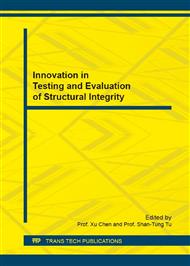p.46
p.51
p.57
p.62
p.67
p.72
p.77
p.83
p.88
An Empirical Life Prediction Method of Cold-Stretched Austenitic Stainless Steel
Abstract:
With the purpose of long-cycle safe operation of cold stretched austenitic stainless steel pressure vessels so as to achieve unification of economy and safety, prediction of fatigue life of S31603 austenitic stainless steel at high temperature is systematic studied. Based on the Hull-Rimmer cavity theory, a fatigue life prediction model applicable to stress controlled is developed. Fatigue test is carried out on the solution annealed and cold stretched S31603 steel at high temperature and corresponding test data is obtained. The fatigue life of the solution annealed and cold stretched materials is predicted by the model and the prediction results are in good agreement with the experimental results. On this basis, the life prediction model coupled with the strain level of cold stretching is further established. Compared with the test data, the prediction results is found to be very satisfactory with an error band less than ±1.5 times. The fatigue life prediction model suitable for stress control at high temperature is simple in form and has a clear and obvious physical significance which points out a new way to predict fatigue life of metal materials.
Info:
Periodical:
Pages:
67-71
Citation:
Online since:
September 2016
Authors:
Price:
Сopyright:
© 2017 Trans Tech Publications Ltd. All Rights Reserved
Share:
Citation:


